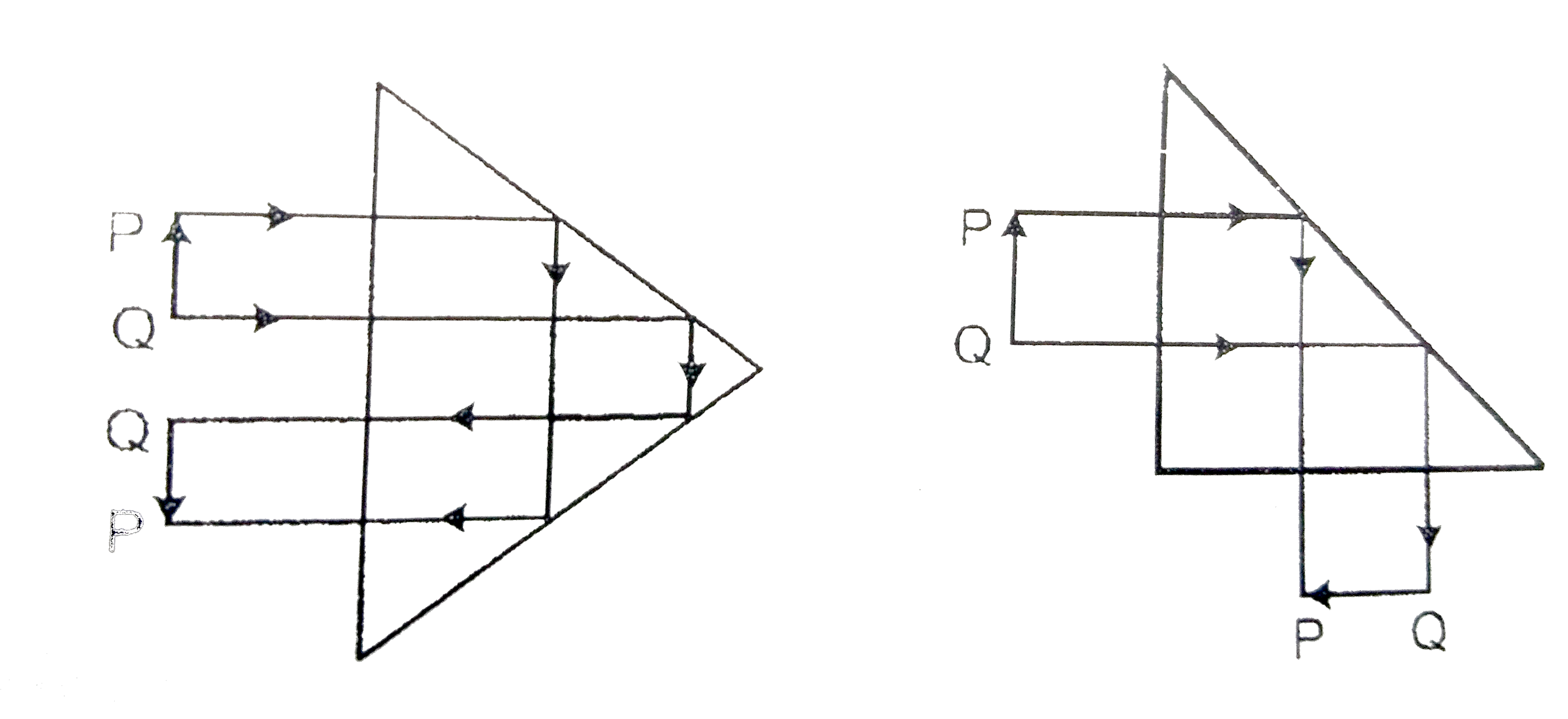A right-angle crown glass prism with critical angle 41∘ is placed berore an object, PQ, in two position as shown in the figure (i) and (ii). Trace the paths of the rays from P and Q passing through the prism in the two cases.
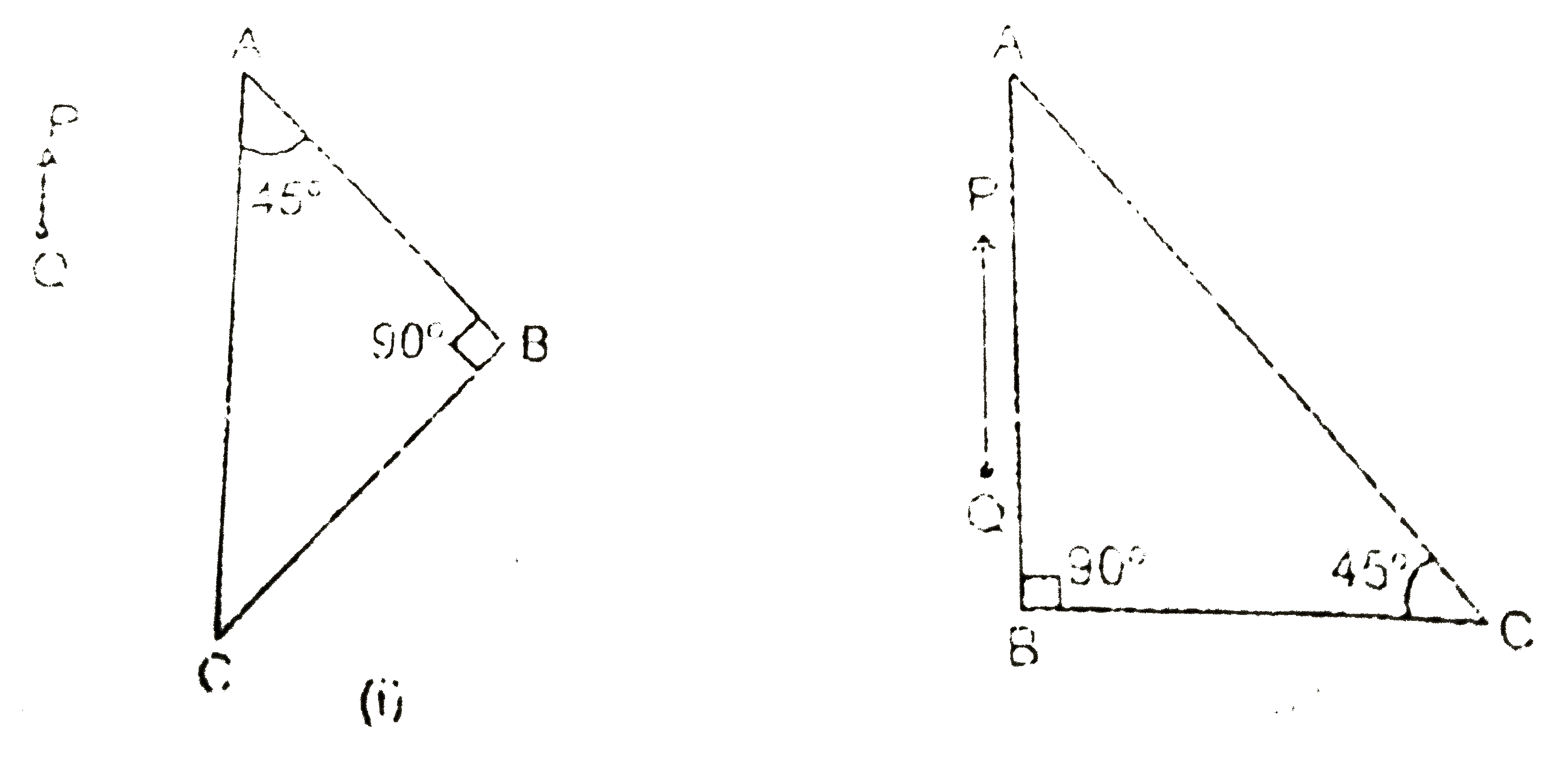
Topper's Solved these Questions
- GEOMATRICAL OPTICS BOOK - RESONANCECHAPTER - GEOMATRICAL OPTICS EXERCISE - Advance level Problems
35 Videos
- GEOMATRICAL OPTICS BOOK - RESONANCECHAPTER - GEOMATRICAL OPTICS EXERCISE - Exercise-2
63 Videos
- EXPERIMENTAL PHYSICSBOOK - RESONANCECHAPTER - EXPERIMENTAL PHYSICSEXERCISE - PART -II
10 Videos
- GRAVITATIONBOOK - RESONANCECHAPTER - GRAVITATIONEXERCISE - HIGH LEVEL PROBLEMS
16 Videos
Similar Questions
A ray PQ is incident normally on the face AB of a triangular prism of refracting angle of 60∘, made of a transparent material of refractive index 2√3, as shown in the figure. Trace the path of the ray as it passes through the prism. Also calculate the angle of emergence and angle of deviation.
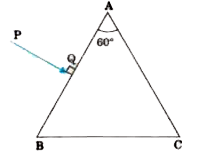
View SolutionA ray PQ is incident normally on the face AB of a triangular prism of refracting angle 60°, made of a transparent material of refractive index 2√3 , as shown in Fig.
Trace the path of the ray as it passes through the prism. Also calculate the angle of emergence and angle of deviation.
View Solution
Knowledge Check
Consider a light beam incident from air to a glass slab at Brewster's angle as shown in figure.
A polaroid is placed in the path of the emergent ray at point P and rotated about an axis passing through the centre and pependicular to the plane of the plaroid.
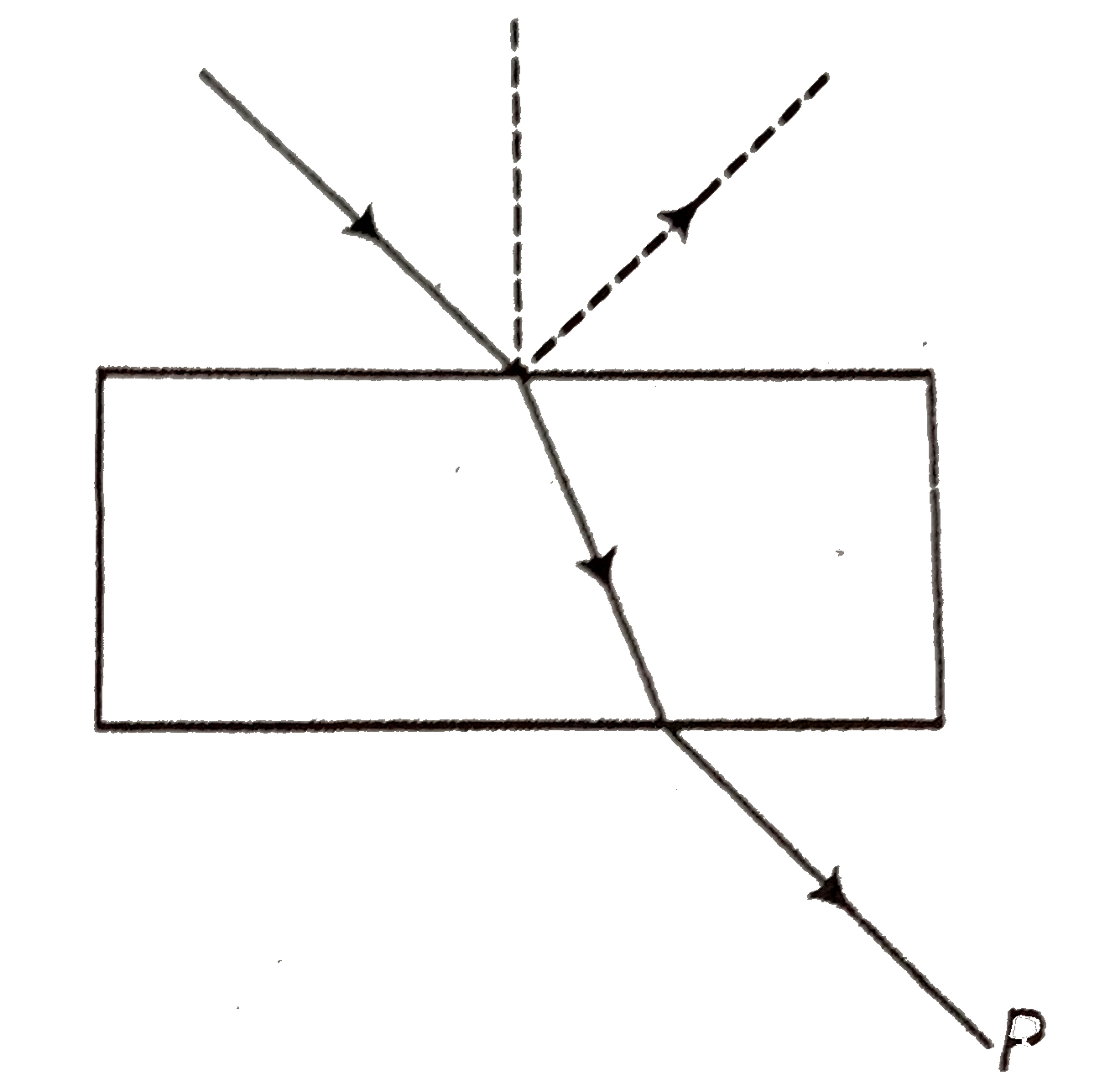 Afor a particular orientation, there shall be darkness as observed through the polaroidBThe intensity of light as seen through the polaroid shall be independent of the rotationCThe intensity of light as seen through the polaroid shall go through a minimum but not zero for two orientations of the polaroidDThe intensity of light as seen through the polaroid shall go through a minimum for four orientations of the polaroid
Afor a particular orientation, there shall be darkness as observed through the polaroidBThe intensity of light as seen through the polaroid shall be independent of the rotationCThe intensity of light as seen through the polaroid shall go through a minimum but not zero for two orientations of the polaroidDThe intensity of light as seen through the polaroid shall go through a minimum for four orientations of the polaroidConsider a light beam incident from air to a glass slab at Brewster's angle as shown in Figure.

A polaroid is placed in the path of the emergent ray at point P and rotated an axis passing through the centre and perpendicular to the plane of the polaroid.AFor a particular orientation there shall be darkness as observed through the polaroid.BThe intensity of light as seen through the polariod shall be independent of the rotation.CThe intensity of light as seen through the Polaroid shall go through a minimum but not zero for two orientations of the polaroid.DThe intensity of light as seen through the polaroid shall go through a minimum for four orientations of the polaroidIn the position of minimum deviation when a ray of yellow light passes through the prism then its angle of incidence is
ALess than the emergent angleBGreater than the emergent angleCSum of angle of incidence and angle is 90∘DEqual to the emergent angle
(a) Draw the ray diagram showing refraction of ray of light through a glass prism. Derive the expression for the refractive index n of the material of prism in terms of the angle A ray angle of minimum deviation δm
(b) A ray of light PQ enters an isosceles right angles prism ABC of refractive index 1.5 as shown in figure .
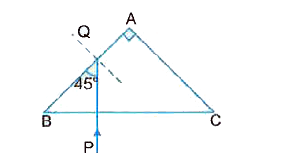
(i) Trace the path of the ray through the prism .
(ii) What will be the effect on the path of the ray if refractive index of the prism is 1.4 ?
View SolutionTwo isosceles right angled glass prisms are placed near each other as shown in the figure. Complete the path of the light ray entering the first isosceles right angled glass prism till it emerges from the second identical prism.
 .
.
View SolutionTwo monochromatic rays of light are incident normally on the face AB of an isosceles right-angled prism ABC. The refractive indices of the glass prism for the two rays "1" and "2" are respectively 1.35 and 1.45. Trace the path of these rays after entering through the prism.
View SolutionTwo monochromatic rays of light are incident normally on the face AB of an isosceles right-angled prism ABC. The refractive indices of the glass prism for the two rays '1' and '2' are respectively 1.38 and 1.52. Trace the path of these rays after entering through the prism.

View SolutionA ray of light passes through a prism as shown in the figure.
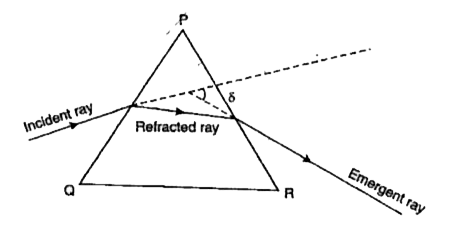
The angle δ is known as
View Solution

